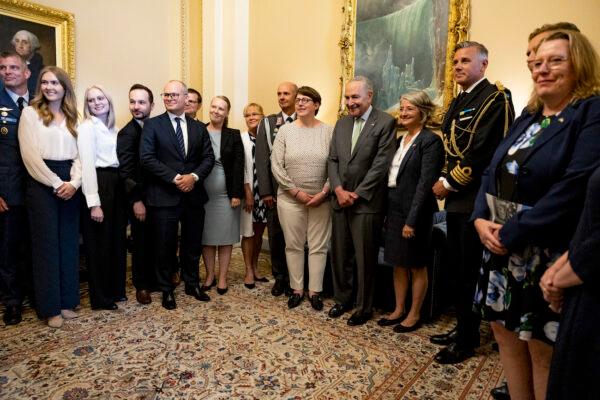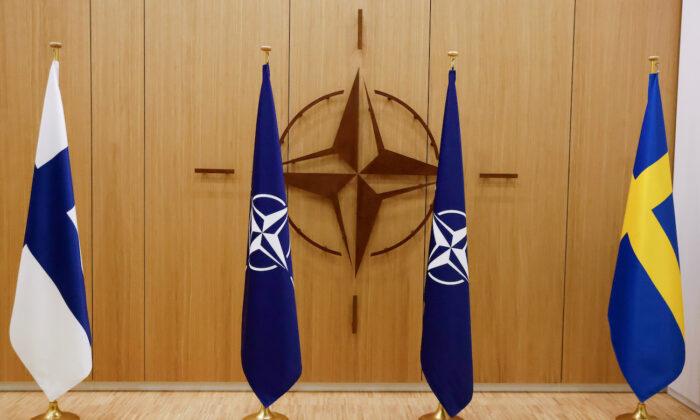The U.S. Senate on Aug. 3 overwhelmingly approved Finland and Sweden’s candidacy to NATO, expanding the Western military bloc in a response to the Russia–Ukraine war.
The Senate voted 95–1 to support ratification of the two countries’ accession documents. The ratification required approval by at least two-thirds of the chamber.
Sen. Josh Hawley (R-Mo.) voted against the measure. Meanwhile, Sen. Rand Paul (R-Ky.) voted present, meaning he didn’t support or oppose the resolution.
Senate Majority Leader Chuck Schumer (D-N.Y.) invited the ambassadors of Finland and Sweden to the Senate gallery to witness the vote.

“This is important substantively and is a signal to Russia. They cannot intimidate America or Europe,” he said on the Senate floor.
Senate Minority Leader Mitch McConnell (R-Ky.) noted that both Finland and Sweden already participate in NATO and U.S.-led missions.
“Finland already meets NATO’s spending target, and Sweden is making significant investments in modernizing its military,” he said. “Even with the capabilities these militaries already have, they will bring meaningful, interoperable military capabilities into the alliance on day one, and improve burden sharing across the alliance. There’s also no question that their entry is specifically in our interest. These are long-standing defense partners of the United States.
“Even closer cooperation with these partners will help us counter Russia and China,” he added. “Their accession will make note of stronger and America more secure.”
Russia Has ‘No Problem’: Putin
Finland and Sweden were formally invited to join NATO on June 29 after Turkey, a NATO member, lifted its opposition to the move.“If NATO troops and infrastructure are deployed, we will be compelled to respond in kind and create the same threats for the territories from which threats towards us are created,” the Russian president said at the time.
“Everything was going fine between us, but now there will be tensions, there certainly will,” he added. “This is obvious and inevitable, I repeat, if there is a threat to us.”
For Finland and Sweden to be protected by the defense clause, the parliaments of all the NATO members must ratify their accession to the bloc. Ratification could take up to a year, although it has already been approved by a few countries, including Canada, Germany, and Italy.






Friends Read Free